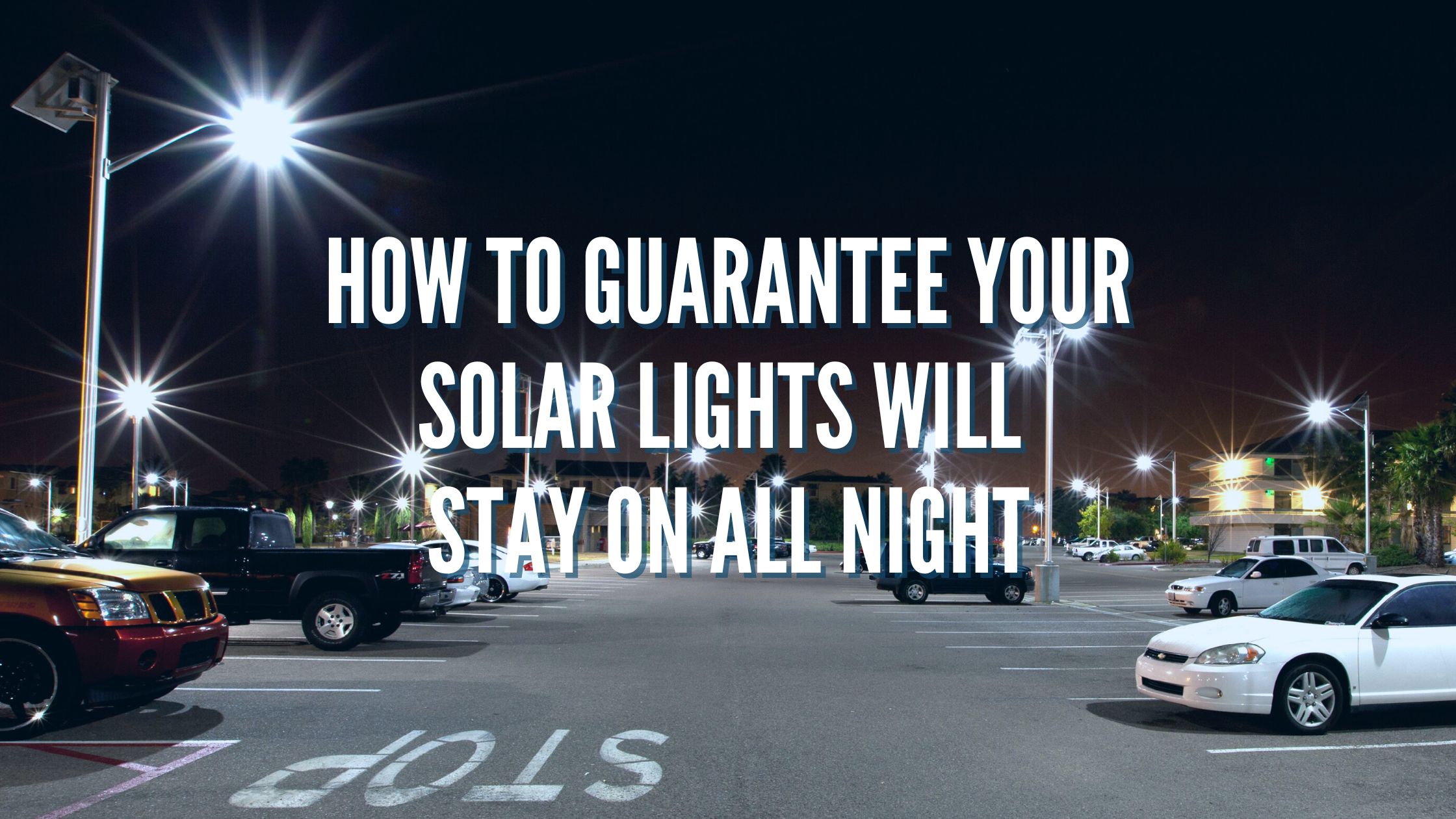


Solar lights get a bad rap since many of the ones on the market today are made as a "one-size-fits-all" when that's really not the case. Many variables need to be taken into account when putting a solar light solution together.
Some applications don't require a sustained light level, like the fire pit in the backyard with a string of solar lights around it. Or the business park that has no one left after 10pm. These projects can have lights that shut off after a set time.
In some cases, the solar lights need to stay on, but not at full output. These lights usually use dimming or motion sensors. These lights turn on at a lower output, say 25-50%, then come up to full when motion is detected. This is great for places with shift changes or where theft and vandalism are likely.
Finally, there are projects where a sustained light level must be maintained, requiring 100% output the entire night. Solar lights you find online or at a big box retailer cannot maintain a light level throughout the night. A commercially designed system is the only thing on the market that can maintain light levels.
Let's go over how to guarantee your solar lights will stay on all night. It really isn't difficult if you have a quality solar light manufacturer sizing up your system and not working with a cheaper – one-size-fits-all unit that isn't appropriately sized for your location and requirements.
A few pieces of data need to be gathered when determining how to size up a solar lighting system. These include:
Once this data is gathered, it is quite simple to size up the solar unit. The amount of sun available, the load requirement, and the length of night and / or operation requirements are then calculated to determine how much solar and battery is required. Remember, use worst case scenario data for off-grid applications, not averages. Averages should only be used for grid-tied applications where a NETZero setup is being used.
Say you have a 50 Watt load operating from dusk to dawn in St. Louis, MO, which only has 2.66 sun hours in the winter and a 14 hour night. This will require a 400 Watt solar, or 26.32 amps from the solar, and 292 amps from the battery to have at least a 5 day backup.
This same load in San Diego, CA, which has 4.71 sun hours in the winter and a 13.5 hour night, will only need a 200 Watt solar, or 14.33 amps from the solar, and 281 amps from the battery for the same 5 day backup.
Now let's take the same load and move it to Boston, MA, but only need it operational at full output for 6 hours and then it can reduce for the remainder of the night. Boston has 2.78 hours of sun in the winter, and a 14.5 hour night, but with the use of adaptive lighting technology, we are able to do this with a 275 Watt panel and a 213 amp hour battery assembly for the same 5 day backup.
However, now we are in a snowy region of the world. This means we should increase the battery backup because the depth of discharge changes in the cold. So let's increase it to 7 days backup and now we are at 299 amps of battery. The difference can make or break a system, especially in the winter when there can be times of extended inclement weather.
There's another thing to take into consideration when doing a solar lighting project that you need to guarantee will operate as expected: system location and installation. These play a much larger role than you may initially imagine.
A solar panel must face the equator to capture the most amount of sun available (unless you are using one of those fancy sun tracking devices). So we have our systems face directly south in the northern hemisphere and at a 45 degree angle. This angle doesn't change unless you get closer to the equator, then it can be a 5 degree or flat mount.
Occasionally, we get a request for a flat mount in the US; however, unless you are in a location with little to no snow, it is not suggested. With the solar at a 45 degree mount, snow isn't able to collect on the panel, and what actually accumulates will melt away shortly after sunrise with the panels starting to warm up. A flat mount doesn't allow for this process to happen fast enough for the solar.
The installation location should also be free of obstructions from the sun. For example, tall buildings, trees, and the like should all be far enough away from the solar installation location that it doesn't cause shade on the panels. Even if one small corner of the panel is shaded, it will not be able to generate the same power, causing the system to not be able to charge the batteries correctly.
As you can see, a properly sized system that is setup to take the worst case scenario into account when designing will guarantee that your solar lights will stay on all night. Missing any part of this data gathering and configuring, or installing the system in a space that isn't good for solar, will cause problems down the line. Instead, work with a reputable company that can assess the system design and installation location and ensure that the light will operate correctly.
